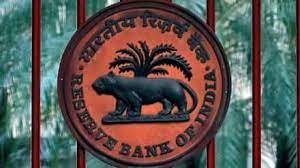Deposit Growth Matches Credit Amid Lending Slowdown: An Analysis of India’s Financial Landscape
In recent months, India has experienced a notable shift in the dynamics between deposit growth and credit growth in the banking sector. According to reports, deposit growth has now matched the pace of credit growth amidst a slowdown in lending activities. This development holds significant implications for the broader economy and the financial system’s health. Traditionally, credit growth has often outpaced deposit growth, with banks relying on external funding to meet rising credit demands. However, the current trend signals a more stable banking environment where deposits are keeping pace with the loan growth.
What is Driving the Slowdown in Lending?
Several factors contribute to the slowdown in credit growth, including heightened inflationary pressures, rising interest rates, and increased caution among banks in the face of global uncertainties. Banks are more selective in their lending practices, focusing on high-quality borrowers and cautious about extending credit to riskier sectors. This cautious approach is reflective of a more conservative stance in the financial system, aiming to balance profitability with stability.
Banking Sector’s Role in Economic Stability
The banking sector’s role in supporting the Indian economy is more critical than ever. With economic growth slowing down, banks must adapt to a more challenging lending environment. The simultaneous rise in deposits showcases a healthier banking sector that is less reliant on volatile external funding sources. This scenario benefits depositors as well, as banks are more likely to offer attractive interest rates to maintain their liquidity.

Why This News is Important:
Significance for the Banking Sector
The news of deposit growth matching credit amid a lending slowdown highlights a fundamental shift in India’s banking landscape. It signals a more balanced and sustainable model for banks that could have long-term benefits for economic stability. The growing deposit base is an indication that the financial system is on a firmer footing, allowing banks to better manage risks and maintain liquidity without resorting to excessive borrowing from external sources.
Impact on Deposit Holders
For deposit holders, this trend may result in more favorable interest rates. Banks are more inclined to attract deposits, given the slow growth in credit demand, which could lead to a competitive deposit market. For exam aspirants, understanding this dynamic is crucial as it speaks to the evolving role of banks in managing public funds and maintaining the economy’s health. It’s a sign that the financial system is increasingly becoming resilient to external shocks, offering a more stable financial environment for the public.
Macro-Economic Implications
On a macro level, this shift may indicate a more cautious and sustainable growth trajectory for the Indian economy. With banks focusing on securing stable deposits and minimizing risky lending, there’s a possibility of reduced inflationary pressures and a more controlled economic environment. This stabilization is essential for India’s economic growth in the coming years, providing a buffer against the global financial uncertainties that have impacted markets worldwide.
Historical Context: Background Information
The relationship between deposit growth and credit growth has always been a key indicator of the banking sector’s health. In the early years following India’s economic liberalization in the 1990s, the country witnessed rapid credit expansion as banks sought to meet the growing demands of the emerging market. During this period, credit growth often outpaced deposit growth, prompting banks to look for funding through other channels, including foreign capital.
However, post-2008 financial crisis, the global financial system experienced significant turmoil, and India too felt the impact through sluggish growth and rising NPAs (Non-Performing Assets). In response, banks became more conservative in their lending practices. The Reserve Bank of India (RBI) introduced various measures to encourage deposits, including reducing interest rates and offering incentives to depositors.
In the last decade, India’s banking sector has undergone several reforms to ensure stability, including strengthening regulatory frameworks and encouraging digitization in banking. These efforts have led to better deposit collection and risk management practices, culminating in the recent matching of deposit growth with credit growth.
Key Takeaways from “Deposit Growth Matches Credit Amid Lending Slowdown”
| S.No | Key Takeaway |
|---|---|
| 1 | Deposit Growth and Credit Growth Are Now on Par: The banking sector has witnessed deposit growth that matches the pace of credit growth, reflecting a healthier and more balanced financial system. |
| 2 | Slowdown in Lending: A reduction in credit growth is attributed to rising inflation, interest rates, and cautious lending practices by banks. |
| 3 | Economic Implications: The trend of matching deposit and credit growth suggests a more stable banking sector, which could contribute to the broader economy’s resilience. |
| 4 | Benefits for Deposit Holders: With rising deposits, banks may offer higher interest rates, which is advantageous for savers and depositors. |
| 5 | Long-Term Financial Stability: A more balanced approach to lending and deposits ensures that banks can better manage risks and remain resilient to economic shocks, benefiting the financial system overall. |
Important FAQs for Students from this News
What is the significance of deposit growth matching credit growth in India?
- Deposit growth matching credit growth indicates a more stable and balanced banking environment. This scenario reflects a healthier financial system where banks can manage risks better and reduce reliance on external funding sources.
Why has lending growth slowed down in India?
- Lending growth has slowed down due to factors such as rising inflation, increasing interest rates, and a more cautious approach by banks in lending to riskier sectors.
How does the slowdown in lending impact the Indian economy?
- The slowdown in lending could result in a reduction in economic growth. However, it also leads to financial stability, as banks focus on maintaining healthy deposit bases and reducing risky loans.
What does the current deposit growth rate indicate for depositors?
- As deposit growth rises, banks may offer more competitive interest rates to attract depositors. This trend is beneficial for savers who can earn higher returns on their deposits.
How does the RBI’s role influence deposit and credit growth?
- The Reserve Bank of India (RBI) plays a key role in regulating interest rates and promoting financial stability, which impacts the overall deposit and credit growth in the banking system.
Some Important Current Affairs Links












